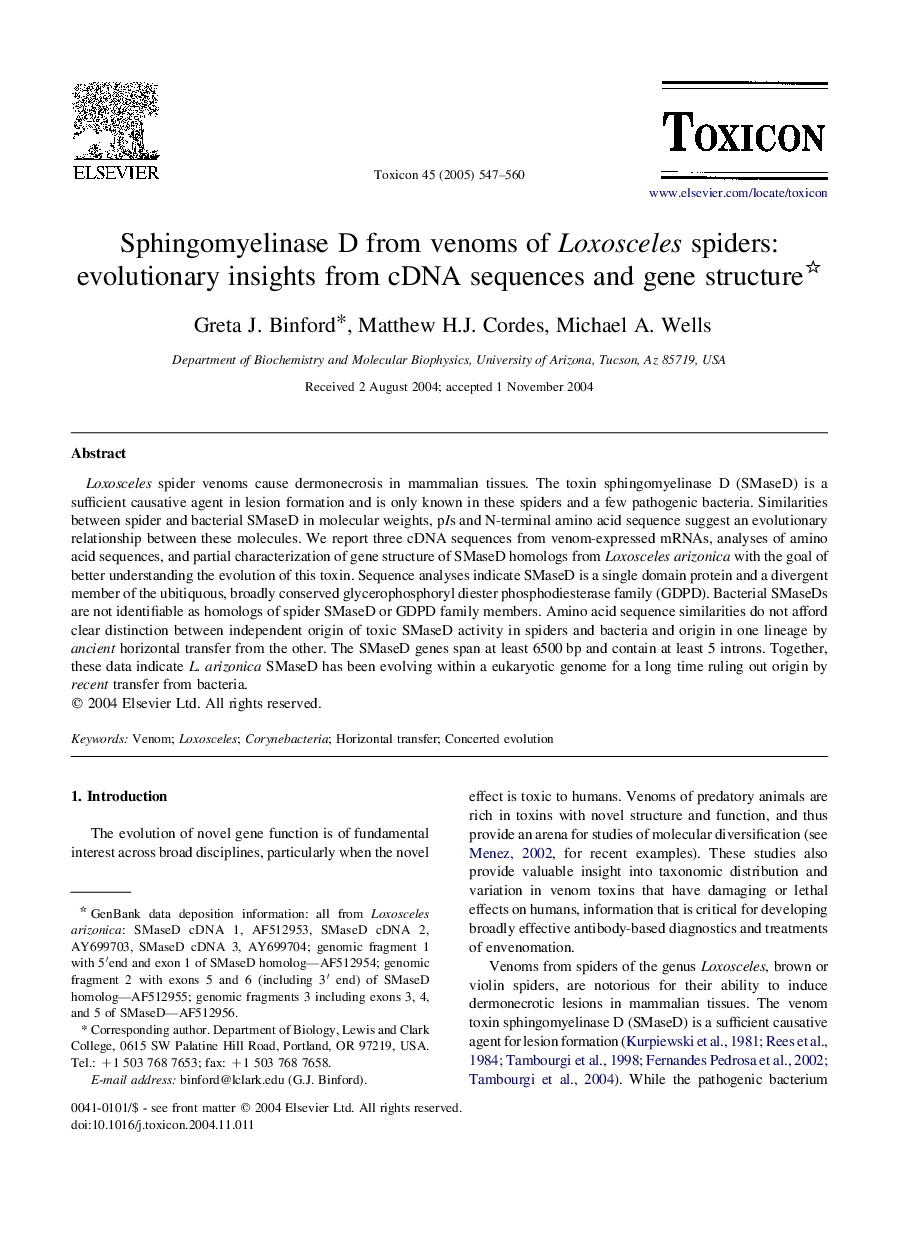| Article ID | Journal | Published Year | Pages | File Type |
|---|---|---|---|---|
| 10880249 | Toxicon | 2005 | 14 Pages |
Abstract
Loxosceles spider venoms cause dermonecrosis in mammalian tissues. The toxin sphingomyelinase D (SMaseD) is a sufficient causative agent in lesion formation and is only known in these spiders and a few pathogenic bacteria. Similarities between spider and bacterial SMaseD in molecular weights, pIs and N-terminal amino acid sequence suggest an evolutionary relationship between these molecules. We report three cDNA sequences from venom-expressed mRNAs, analyses of amino acid sequences, and partial characterization of gene structure of SMaseD homologs from Loxosceles arizonica with the goal of better understanding the evolution of this toxin. Sequence analyses indicate SMaseD is a single domain protein and a divergent member of the ubitiquous, broadly conserved glycerophosphoryl diester phosphodiesterase family (GDPD). Bacterial SMaseDs are not identifiable as homologs of spider SMaseD or GDPD family members. Amino acid sequence similarities do not afford clear distinction between independent origin of toxic SMaseD activity in spiders and bacteria and origin in one lineage by ancient horizontal transfer from the other. The SMaseD genes span at least 6500Â bp and contain at least 5 introns. Together, these data indicate L. arizonica SMaseD has been evolving within a eukaryotic genome for a long time ruling out origin by recent transfer from bacteria.
Related Topics
Life Sciences
Biochemistry, Genetics and Molecular Biology
Biochemistry, Genetics and Molecular Biology (General)
Authors
Greta J. Binford, Matthew H.J. Cordes, Michael A. Wells,
